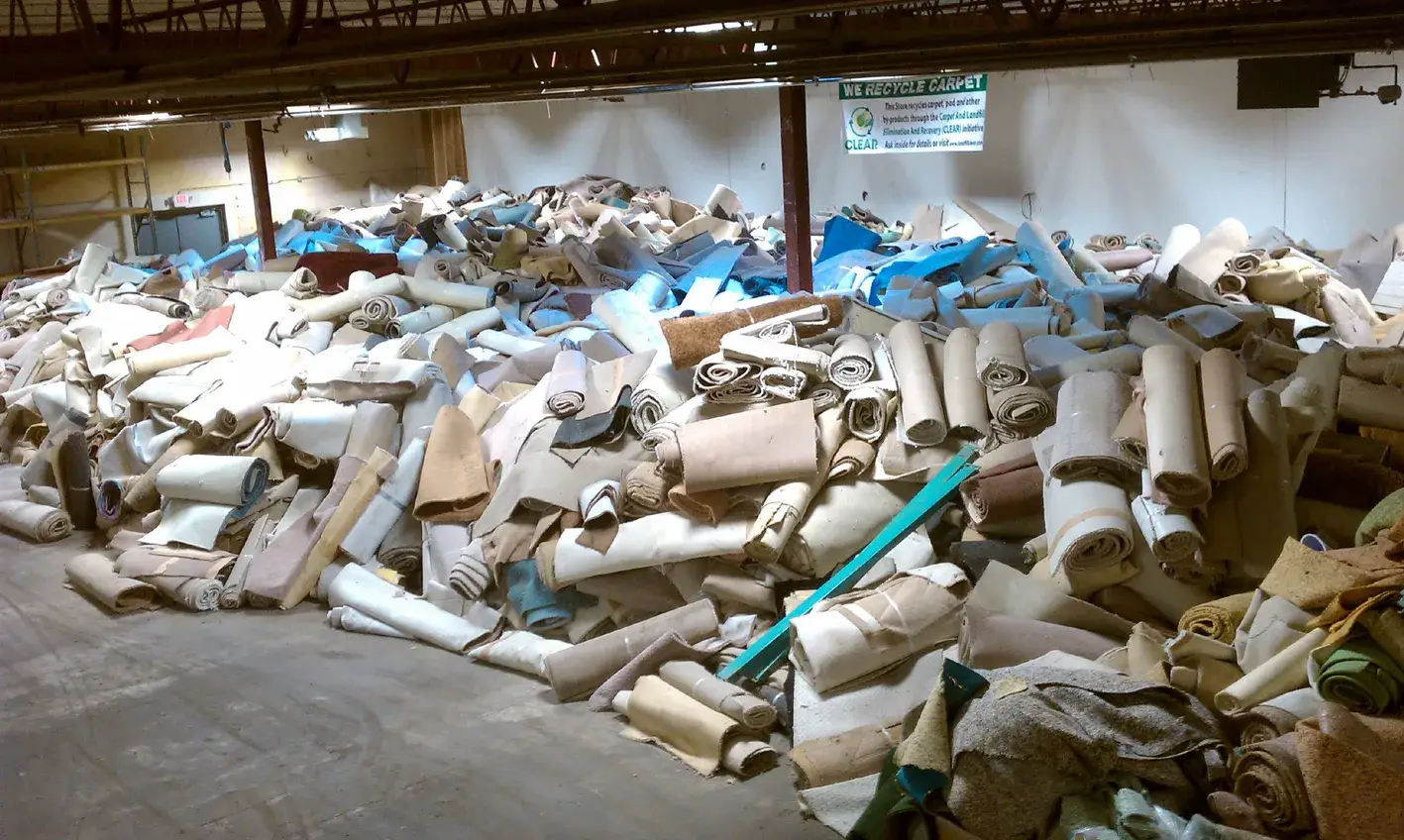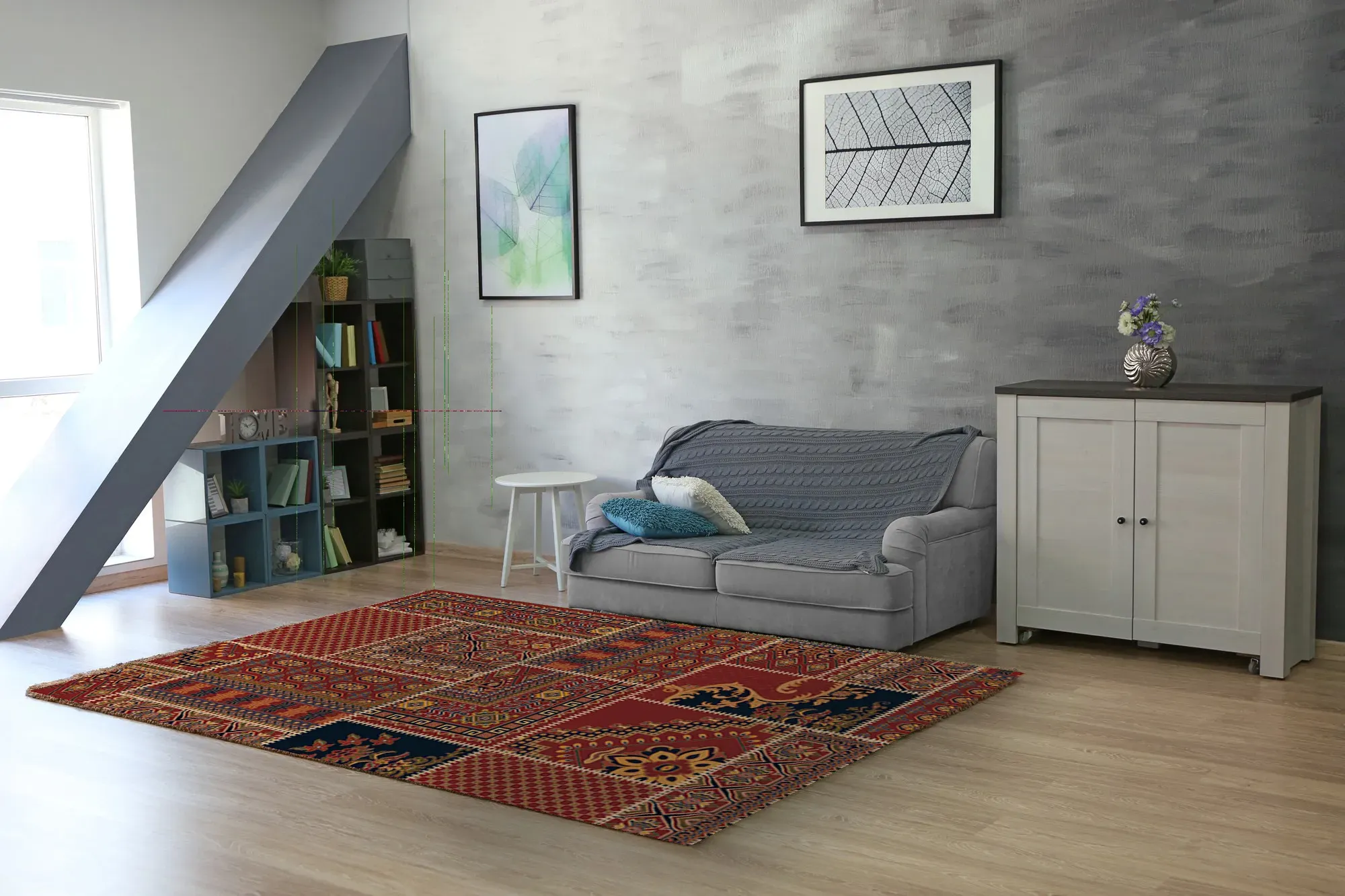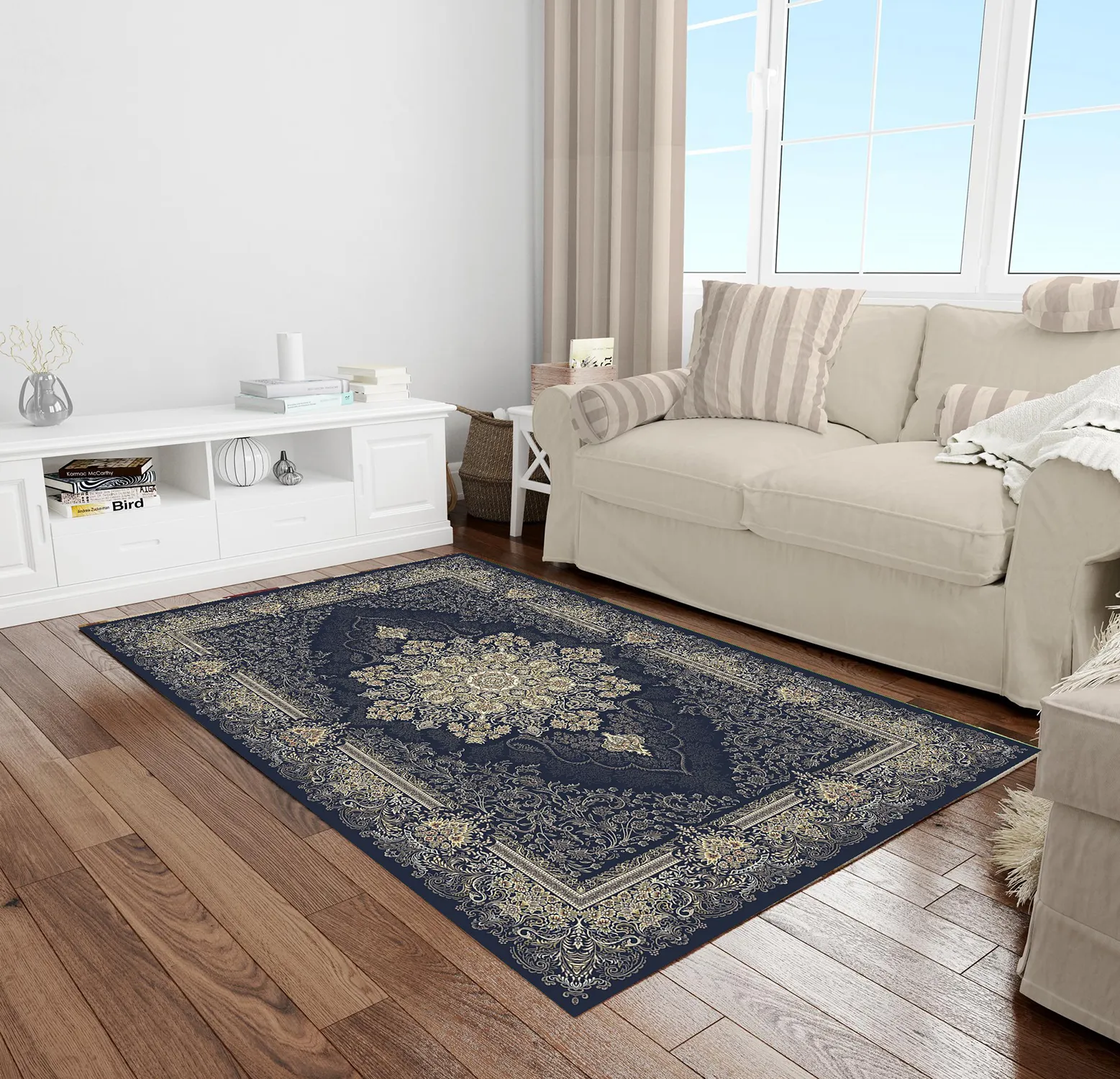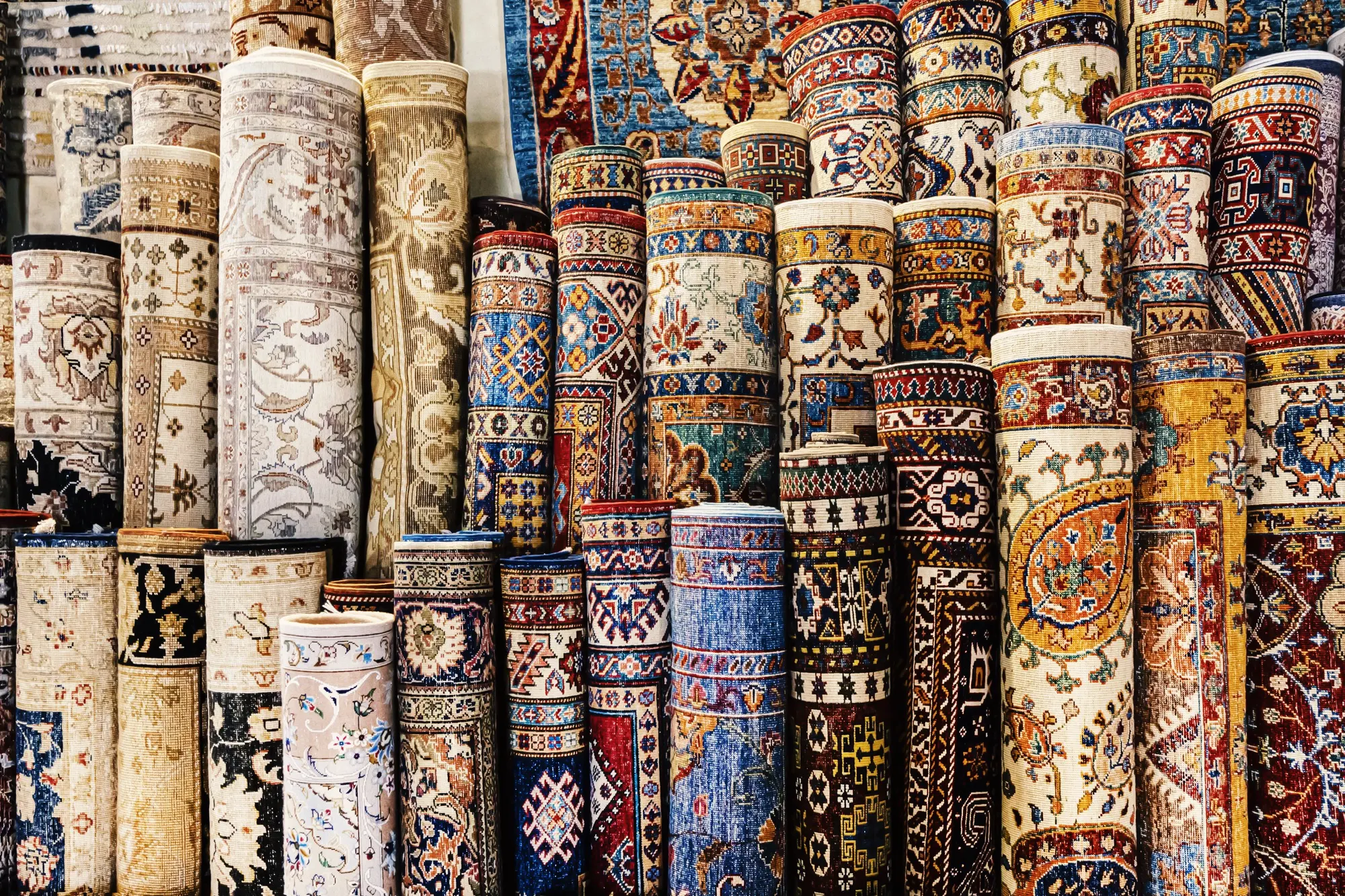
1. Carpets and the Environment: A Challenge and an Opportunity
Machine-made carpets are among the most popular floor coverings in homes and offices worldwide, including in Iran. In Britain, over 58% of floor coverings consist of carpets. However, the production, installation, and use of carpets are accompanied by the generation of significant waste. This waste includes carpet offcuts in factories and old carpets that are discarded. In Britain alone, approximately 400,000 tons of old carpets end up in landfills annually.
This high volume of waste poses a serious threat to our environment. Late-stage breakdown of carpet materials can harm the air, water, and soil. However, there is an opportunity for change. By reconsidering consumption habits, employing innovative technologies, and implementing creative solutions, we can reduce or even eliminate this threat and continue to benefit from the advantages of having carpets in our homes and workplaces.
2. Quantification of carpet waste: A Growing Problem
One of the most important environmental challenges of the present century is waste management and its reduction on the Earth’s surface. Among textile wastes, carpet waste ranks at the top of this challenge due to its large volume and relatively low weight. With a global growth of 4.5% in carpet production and sales, without serious commitments at political, technical, and social levels, the carpet waste problem will not only remain unresolved but also worsen.
To better understand the issue of carpet waste and how it forms, we need to examine the entire life cycle of a carpet from production to complete or partial disposal. With this approach, carpet waste can be divided into two categories:
(a) Pre-consumer or industrial waste: This waste is generated during the carpet production process, such as cutting yarn and discarding raw materials.
(b) Post-consumer or old carpets: This category includes carpets that are no longer usable and are discarded.
The difference between these two categories in the volume of waste generated and the solutions for reducing or eliminating it is very important. In the following sections, we will discuss in detail each of these categories and their management solutions.
2.1. Pre-consumer or industrial waste
To accurately calculate the amount of carpet waste generated during production, we first need to understand the production methods and carefully examine the various processes where waste is generated.
Generally, carpets are woven using four main methods:
- Weaving: This method was prevalent until the late 1950s and had a relatively low production speed (about 70 rows per minute).
- Tufting: Developed by America and introduced to Europe in the 1950s, this method has a minimum production speed of 2000 rows per minute.
- Needle punching: In this method, bent needles create knots inside the carpet or are bonded at relatively low speeds.
- Other methods: These include hand-woven carpets with very low production speeds.
Today, approximately 76% of all carpets are produced using tufting technology, 12% are woven, 9% are needle-punched, and 3% are produced using other methods such as hand-woven carpets.
A few years ago, researchers examined the amount of carpet waste from the beginning of fiber production to the final carpet. They focused specifically on tufted carpets and calculated the amount of waste across the entire production line.
The largest amount of waste is usually generated during the cutting and fitting stage of carpets. In this stage, waste can reach up to 12% or even more. Considering the various processes applied to this waste, they have potential value for recycling.
In the production of carpets with natural fibers such as wool, up to 5% of the wool may be lost during the initial cleaning process. This percentage is lower for synthetic fibers, around 2 to 3%. However, in the production of synthetic fibers, due to polymerization processes, material conversion, end-of-life, and yarn breakage, more waste (about 15%) is generated. Additionally, 3% of other waste is produced during the yarn twisting stage for adjusting the yarn length and packaging.
Tufting also generates waste due to yarn pulling, breakage, and leftover yarn on bobbins. In contrast, weaving and felting methods produce less waste compared to tufting. Based on these estimates, the total carpet waste production is at least 7%. In other words, for every one billion Dollars of carpet produced, approximately 70 million Dollars of raw materials are wasted.

2.2. Post-consumer or used carpet waste
The waste generated from old carpets is much greater compared to pre-consumer waste. This type of waste results from replacing carpets in offices, hotels, apartments, and homes. Therefore, old carpets vary significantly in quality, cleanliness, type of materials used, lifespan, and quantity.
In Britain alone, over 400,000 tons of old carpets are buried in landfills annually. Due to the large volume and relatively low weight of carpets and the very slow decomposition process, this volume of waste puts significant pressure on landfill capacity and ultimately leads to air, soil, and water pollution.
3. Methods of Carpet Waste Management
Although the volume of discarded carpets is not significant compared to total waste (about 2%), they still pose a challenge to the textile industry due to the large volume and space they occupy.
With proper management, both pre-consumer and post-consumer waste can be reused.
Pre-consumer waste: This waste is clean, unused, and usually has a clear history of raw materials and production processes. Therefore, creatively and innovatively utilizing this waste is much simpler.
Post-consumer waste: Managing waste from old carpets is much more complex and challenging. In the case of old carpets, in addition to the diversity of materials in a particular carpet, differences between different carpets, material separation, cleaning, and disinfection must also be considered. Additionally, the cost of collection, sorting, and material separation adds to the complexity of managing this type of waste.
For this reason, most research on carpet waste focuses on pre-consumer waste. Reducing variables in this type of waste helps achieve practical solutions for cleaner waste management and may also open up pathways for managing old carpets.
4. Carpet Recycling and Related Issues
Dealing with carpet waste is not a simple task and raises its own specific issues in the realms of the environment, technology, and public concerns. To achieve sustainable and actionable solutions, these issues must be addressed with care and finesse. This can only be possible through understanding and evaluating current methods of carpet waste management. These methods include:
- Landfill disposal
- Incineration
- Reusing in other forms

4.1. Landfill Disposal
Landfill disposal is the simplest method of waste disposal. However, the scarcity of landfill sites and high waste disposal taxes have increasingly made this option unacceptable. Moreover, the risks of air, soil, and water pollution make this method ethically unacceptable. When materials are left in landfill sites, they decompose over time, producing small molecular compounds and gases that pollute the air, soil, and groundwater. Although landfill technology has significantly improved, the risks of soil, air, and groundwater pollution with long-term consequences still exist. Birds and wild animals that often scavenge for discarded food in such places can spread bacteria and ultimately affect the food chain.
In the present century, considering waste as a potentially valuable material, burying it in a pit is considered an outdated and illogical practice.

4.2. Incineration
Carpets are primarily made from materials with high calorific value (LIP – Locked-in Potential). In fact, LIP for some synthetic materials is comparable to diesel and kerosene (42-46 mJ/kg), polypropylene and polyethylene (46 mJ/kg), and polyester and polystyrene (19-41 kJ/kg). Therefore, incineration is a method of utilizing waste from old carpets for energy production, where the pollution and dirtiness of the carpets are of little importance. However, incineration produces ash containing dioxins, heavy metals, organic carbon, and other toxic substances, some of which are known carcinogens and may also cause various birth defects and/or fatalities. Although there are various safety regulations to reduce or completely eliminate the effects of such hazards, public concerns are often very high.
If toxins are effectively managed, the energy obtained from incineration can be converted into heat or electrical energy. For example, it can be used to heat water and generate steam and consequently, electrical and thermal energy that is transferred to homes and public places. Sweden is at the forefront of this technology and imports various types of waste from its European neighbors to keep its waste-to-energy plants operational.
Pyrolysis, or incineration in the absence of oxygen, is another method of using waste from old carpets. This process involves thermal decomposition (carbonization) of waste at high temperatures and in the absence of air, effectively turning it into artificial coal. This type of coal has a high calorific value and can be used alone or with regular coal. However, the carbonization process requires a significant amount of energy and may not always be economically justified.

4.3. Repurposing into Other Forms
This area involves traditional textile garments being reused through resale or donation via charitable organizations, or sent for reuse worldwide, thereby extending the lifecycle of these products.
Short fibers and unusable remnants resulting from various stages of production have traditionally been used as stuffing materials in furniture such as sofas, mattresses, and pillows. This practical method has been established and is likely to continue.
Additionally, low-quality carpets and waste resulting from quality control are shredded into fine particles and used as filling materials in sheets and panels used for sound and thermal insulation in the construction industry.
Edge trimmings and carpet waste are also used to produce needle-punched felt structures for various applications including backing for carpets.
Old carpet waste may find limited but significant uses such as in construction and geotechnical applications. Ongoing research in this field is bringing about new applications.
Benefits of reusing carpet waste:
- Waste reduction: Reusing carpet waste significantly reduces the volume of waste sent to landfills.
- Environmental protection: Recycling carpet waste helps conserve natural resources and reduces air and water pollution.
- Energy savings: Using recycled materials instead of primary materials requires less energy.
- Job creation: The carpet recycling industry creates new job opportunities.
Challenges of reusing carpet waste:
- Material diversity: Carpets are made from various materials, making it difficult to separate and recycle them.
- Contamination: Old carpets may be contaminated and require cleaning before recycling.
- Cost: Collecting, sorting, and recycling carpet waste can be expensive.
Solutions:
- Development of new technologies: New technologies are needed to separate and recycle various carpet
- materials.
Increase awareness: Increasing public awareness of the benefits of carpet recycling can lead to increased - demand for recycled products.
Government support: Governments can support the carpet recycling industry by providing financial - incentives and enacting supportive legislation.

5. Conclusion:
Reusing carpet waste is a sustainable solution for managing these materials. Despite the challenges, the benefits of carpet recycling are significant. With the development of new technologies, increased public awareness, and government support, the carpet recycling industry can be significantly expanded.
To preserve and even improve the current quality of life, wasting time and resorting to incomplete solutions for managing all waste, particularly carpet waste, will only postpone the problem rather than solve it. What is needed is long-term collective planning backed by serious investment in research and development, as well as coordinated cooperation between the government and related industries. This approach ultimately ensures that waste is perceived as a valuable resource and its use in production becomes part of sustainable development and environmental balance.
Looking to the future, the carpet industry can play a leading role in developing innovative solutions for recycling carpet waste. By employing new technologies, recycling processes can become more efficient and cost-effective. Additionally, with increased awareness of the importance of recycling, the demand for products made from recycled materials will increase.






